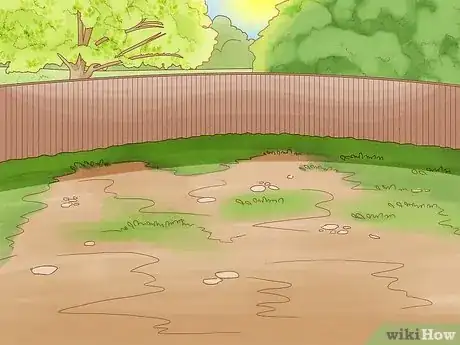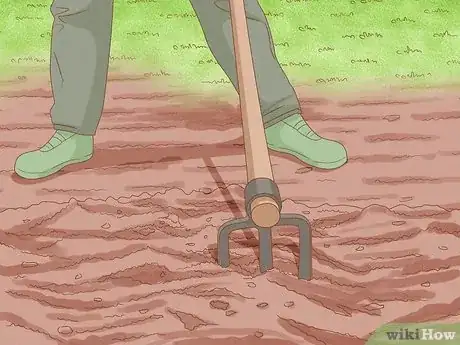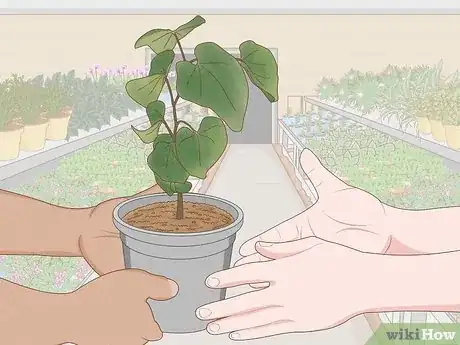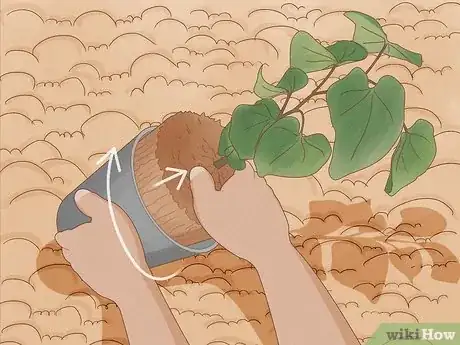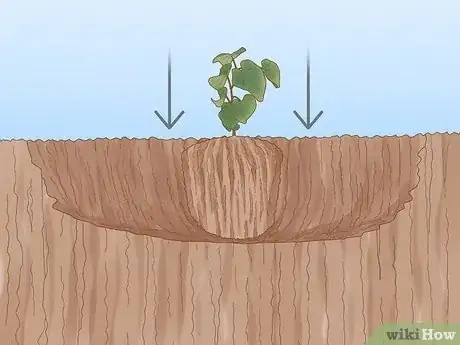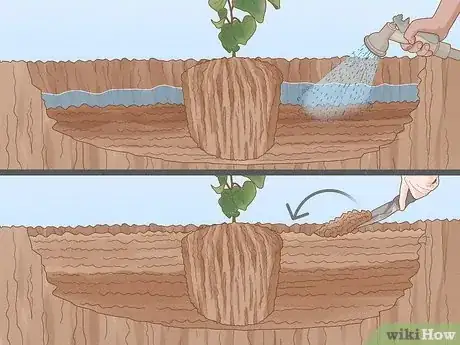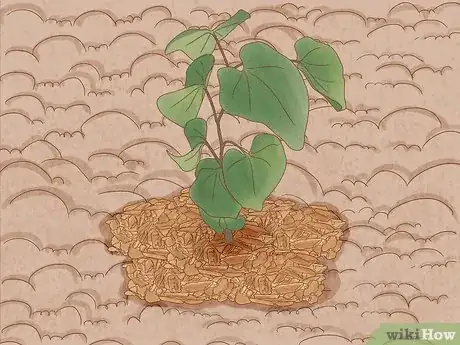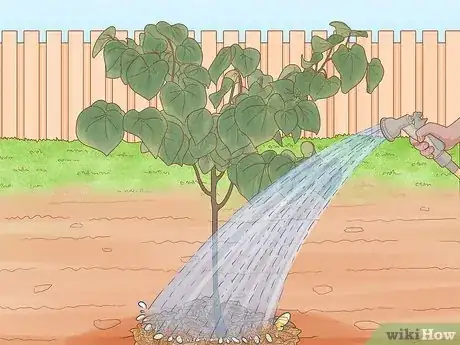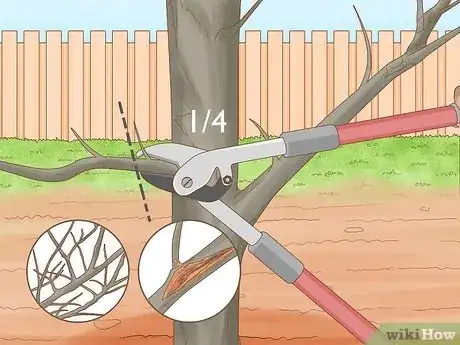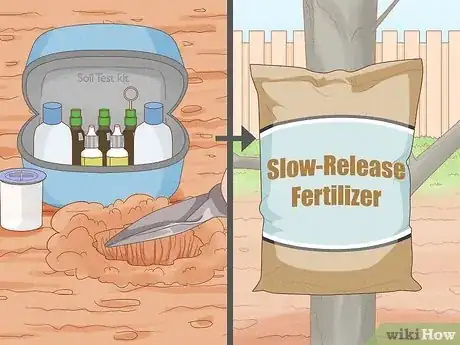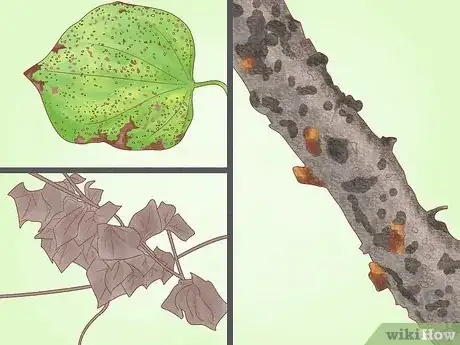wikiHow is a “wiki,” similar to Wikipedia, which means that many of our articles are co-written by multiple authors. To create this article, 11 people, some anonymous, worked to edit and improve it over time.
wikiHow marks an article as reader-approved once it receives enough positive feedback. In this case, 93% of readers who voted found the article helpful, earning it our reader-approved status.
This article has been viewed 159,286 times.
Learn more...
Rosebud trees are known for the rose-purple flowers they produce on their dainty branches at the start of each spring. Some redbud trees also have purple, lavender, pink, or white blooms, even though the rose-colored flowers are most common. These trees are fairly easy to plant if done while still young, and they are even easier to maintain.
Steps
Initial Planting
-
1Choose a good location. Redbud trees prefer light shade, especially in the summer. The tree is fairly adaptable, however, and can also tolerate full sun. In fact, the more sun it receives during the cold months of winter, the better. The only locations that need to be avoided are those with heavy shade.[1]
-
2Amend the soil only if desired. Redbud trees prefer loose, well-drained soil, but they are very sturdy and can thrive in the majority of soil types. If you do decide to amend the soil, though, you can do so simply by chopping the soil up with a rake or shovel to loosen it. If it is extremely dense or clay-like, you could even mix in some coarse grain garden sand to improve its ability to drain. You do not need to add fertilizer, however, since redbud trees are capable of absorbing nitrogen in through the air.[2]Advertisement
-
3Obtain a young redbud in a container from a local garden store or nursery. Local stores are more likely to have stock that can withstand the climate you live in. The tree can be difficult to transplant as it gets older, so you should get as immature a tree as possible.
-
4Dig a hole that is four times as wide as the root ball. The roots need plenty of room to spread out inside the hole. The hole should also be about equal in depth to the height of the roots.
-
5Remove the redbud tree from its container. Place the tree on its side and gently twist the container off.
-
6Place the tree in the hole. Keep it as vertical as possible, enlisting the help of another person if necessary. Add a little soil back in to help keep the plant standing straight.
-
7Fill the hole with water and the remainder of the soil. Use a garden hose to fill the hole with water. Wait until the roots and the surrounding soil absorb the water before filling the hole with the rest of the soil, covering the roots completely. Give the soil another thorough watering to help the soil settle.
-
8Add mulch to the area. Use bark chips or another type of moisture-retaining mulch. Spread the mulch in a thin layer around the base of the tree, above the root area.
Management
-
1Make sure the tree receives moderate amounts of water. Once established, the tree can withstand short periods of drought, but it always prefers to be kept moist. When it is still young, within the first one or two seasons after being planted, you should give the tree a thorough watering if you experience a drought that lasts for two weeks or more.[3]
-
2Keep the branches pruned. You can prune during the late fall or on a mildly cold day in winter, while temperatures are above the freezing point. You can also prune during the late spring, after the blooms have fallen from the tree. Remove diseased wood first. Then, cut away old lower branches close to the trunk, as well as any branches that are intertwined or growing in the wrong direction. Never remove more than 1/4 of the tree at once.[4]
-
3Fertilize only as needed. Ideally, you should test the soil each fall to determine if it's missing any vital nutrients. Instead of picking a general all-purpose fertilizer, add amendments that will introduce the lacking nutrients back into the soil.[5]
- Many redbud trees grow well enough on their own without the use of fertilizer, but this may not be true in all cases, so it's important to check the soil on a yearly basis.
- Typically, you won't need to add much if any nitrogen to the soil. You may need to select a slow-release fertilizer with higher concentrations of phosphorus and potassium than of nitrogen, and only apply it once, toward the beginning of the autumn.
-
4Watch out for pests and disease. Leaf anthracnose, botryosphaeria canker, and verticillium wilt are the three diseases that affect redbud trees most often. Wood-boring bugs have been known to attack the soft wood of these trees, and insects like the redbud leaffolder, grape leaffolder, and Japanese weevil are known to eat the leaves. A healthy tree is less likely to succumb to these threats than a damaged tree, so prevention is the best remedy. An infected tree should first be made healthy before you consider applying an appropriate pesticide or fungicide.[6]
Community Q&A
-
QuestionCan I start a tree from seeds?
 Community AnswerYes, but only if you are patient. The seed shell is tough, and those that have gone through natural freeze/thaw cycles tend to germinate readily. Seeds can be in the ground or environment for several years before germinating. Finding the new seedlings that sprout about the parent trees is far less taxing, and very easy to do with a high success rate.
Community AnswerYes, but only if you are patient. The seed shell is tough, and those that have gone through natural freeze/thaw cycles tend to germinate readily. Seeds can be in the ground or environment for several years before germinating. Finding the new seedlings that sprout about the parent trees is far less taxing, and very easy to do with a high success rate. -
QuestionCan redbuds be grown in southern California?
 Community AnswerYes. I have one growing in the San Fernando Valley, and a friend has one in Pasadena.
Community AnswerYes. I have one growing in the San Fernando Valley, and a friend has one in Pasadena. -
QuestionMy redbud tree has not budded in four years. How can I induce budding?
 Community AnswerAdd a fertilizer high in Phosphorus. Phosphorus causes budding, nitrogen causes leafing.
Community AnswerAdd a fertilizer high in Phosphorus. Phosphorus causes budding, nitrogen causes leafing.
Things You'll Need
- Young redbud tree
- Shovel
- Garden sand (optional)
- Garden hose
- Garden shears
- Pesticides (as needed)
References
- ↑ https://www.gardenista.com/posts/gardening-101-eastern-redbud-cercis-canadensis-trees-planting-care-and-design-guide/
- ↑ https://www.gardendesign.com/trees/eastern-redbud.html
- ↑ https://www.gardenista.com/posts/gardening-101-eastern-redbud-cercis-canadensis-trees-planting-care-and-design-guide/
- ↑ https://bexar-tx.tamu.edu/homehort/archives-of-weekly-articles-davids-plant-of-the-week/texas-redbud/
- ↑ https://www.bartlett.com/resources/plant-health-care-recommendations-for-redbud.pdf
- ↑ http://plants.usda.gov/factsheet/pdf/fs_ceca4.pdf
About This Article
Redbud trees are adaptable and relatively easy to plant. First, you’ll need to locate a place in your yard that gets some sunlight or is partially shaded. Since the roots will rapidly spread, dig a hole 4 times the size of the root ball. Then, position the tree in the middle of the hole and add enough soil to hold it up straight. Before you add the rest of the soil, fill the hole with water from a garden hose. Once the roots absorb the water, add the remaining soil. Finally, it’s a good idea to spread the area with bark chips or another type of mulch to keep the soil moist. For tips on how to prune your redbud tree, read on!
